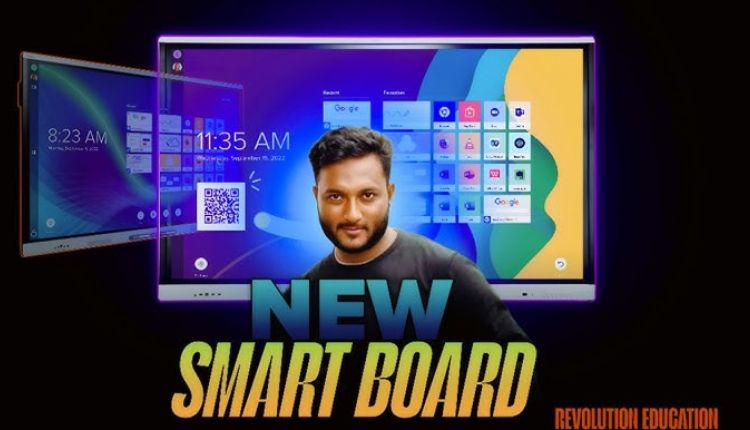From Chalkboards to Interactive Displays
The journey to the modern smart board began long before digital screens entered classrooms and offices. For decades, chalkboards were the dominant tool for teaching and presenting, offering a large, reusable writing surface that could be seen by an entire room. While functional, chalkboards created dust, had limited color options, and required constant manual erasing. In the mid-to-late 20th century, whiteboards emerged as a cleaner, more flexible alternative. These glossy, nonporous boards allowed presenters to write with colorful dry-erase markers, making content more visually engaging and easier to maintain.
Whiteboards quickly became standard in schools, conference rooms, and creative workspaces. They encouraged brainstorming and visual thinking while eliminating some of the mess associated with chalk. However, traditional whiteboards had a major limitation—they couldn’t store or share what was written. Once the session ended and the board was erased, the content disappeared unless someone took notes or snapped a photo. This gap between analog writing and digital storage created an opportunity for innovation, setting the stage for the invention of the smart board.
The Birth of the Smart Board
The first commercial smart board was developed in 1991 by SMART Technologies, a Canadian company founded by David Martin and Nancy Knowlton. Their vision was to create a tool that combined the simplicity of whiteboarding with the power of computers and digital projection. The idea emerged from a growing need for more interactive and connected presentation tools in business and education.
At the time, overhead projectors and early computer projectors were common in corporate boardrooms and classrooms, but they could not interact directly with digital content. Martin and Knowlton envisioned a device where users could touch the screen to control computer applications, annotate over images, and save their work. The original smart board used rear-projection technology connected to a computer, allowing the surface to act as both a display and an input device.
This was a groundbreaking step forward. For the first time, a presenter could move seamlessly between writing, interacting with on-screen files, and integrating multimedia into their presentation—all on one surface. It bridged the gap between traditional brainstorming methods and the emerging possibilities of digital communication.
Why the Smart Board Was Invented
The primary motivation behind the smart board’s invention was to make meetings, lessons, and collaborative sessions more engaging and efficient. Martin and Knowlton recognized that traditional presentation methods were often one-sided, with a presenter speaking while others passively observed. By adding touch-based interactivity, they aimed to make communication more participatory.
In education, the smart board allowed teachers to create dynamic lessons that combined text, images, videos, and web resources on one screen. Students could come up to the board, move elements around, and interact directly with the lesson material. This approach not only increased engagement but also catered to different learning styles, especially for visual and kinesthetic learners.
In corporate environments, the smart board addressed the need for more collaborative and productive meetings. Teams could annotate directly on documents, manipulate data, and capture every note in real time without the risk of losing ideas when the board was erased. By blending presentation and collaboration tools into one system, the smart board became a catalyst for better communication and problem-solving.
The Evolution of Smart Board Technology
Since its debut, smart board technology has evolved dramatically. Early models relied on projection systems, but advances in flat-panel displays and touch-sensitive technology led to sleeker, more responsive designs. Multi-touch capabilities allowed multiple users to interact simultaneously, making brainstorming sessions more fluid. Integration with cloud services, video conferencing platforms, and mobile devices further expanded their versatility.
Today’s smart boards support a wide range of applications. In classrooms, they integrate with learning management systems, enabling teachers to store lessons, track student participation, and access educational resources instantly. In business settings, they connect with platforms like Microsoft Teams, Zoom, and project management software, ensuring that collaboration flows seamlessly between in-person and remote participants.
Smart Board for Conference Room Use
One of the most popular modern applications is the smart board for conference room settings. Conference rooms are the nerve centers of organizational decision-making, and smart boards have transformed how these spaces function. Instead of juggling multiple tools—a projector, a traditional whiteboard, a video conferencing system—a smart board combines them into a single, integrated platform.
With a smart board for conference room use, teams can launch a presentation, annotate over slides, access cloud-based documents, and engage remote participants—all without switching devices. The ability to save and share meeting notes instantly means that ideas are preserved and action items are documented. For hybrid workforces, these boards bridge the gap between on-site and remote attendees, making collaboration more inclusive and efficient.
Advanced features such as multi-touch support, wireless screen sharing, and high-resolution displays ensure that presentations are both visually striking and interactive. For companies seeking to enhance productivity, streamline communication, and modernize their meeting spaces, a smart board for conference room installation is often a strategic investment.
Impact Beyond Business and Education
While education and corporate environments remain the primary markets for smart boards, the technology has also found applications in healthcare, government, and creative industries. In hospitals, interactive boards can be used for patient education, staff training, and surgical planning. In public sector agencies, they support community meetings and planning sessions. Creative teams use them for design thinking workshops, storyboarding, and visual project mapping.
This versatility underscores the broader appeal of smart board technology—it adapts to the needs of any group that values interaction, visualization, and real-time collaboration. Whether planning a new city infrastructure project, developing a marketing campaign, or teaching anatomy, smart boards provide a shared digital workspace where ideas come to life.
Looking Ahead: The Future of Interactive Collaboration
The smartboard’s invention marked a turning point in how people interact with information, and its evolution shows no signs of slowing. As artificial intelligence, augmented reality, and machine learning continue to advance, smart boards will likely become even more powerful. We can expect future models to feature predictive collaboration tools, advanced handwriting recognition, AI-generated content suggestions, and deeper integration with immersive technologies.
At the same time, the core mission will remain the same: to make collaboration more engaging, inclusive, and effective. Just as whiteboards once replaced chalkboards, smart boards have redefined what a shared visual space can be. The combination of tactile interaction and digital connectivity remains a driving force in how teams learn, plan, and innovate.
Conclusion: From Vision to Global Impact
What began in 1991 as an innovative blend of whiteboarding and computer technology has grown into an essential tool for classrooms, boardrooms, and beyond. The smart board’s inventors, David Martin and Nancy Knowlton, sought to solve a simple but important problem—how to make presentations more interactive and collaborative. In doing so, they created a technology that has revolutionized the way ideas are shared and developed.
From its roots in enhancing basic visual communication to its current role as a hub for digital collaboration, the smart board remains a testament to the power of innovation. Whether in a classroom, sparking student engagement, in a corporate meeting using a smart board for conference room productivity, or in any setting where ideas need to be shared visually, this technology continues to bridge the gap between people and information in the most interactive way possible.






